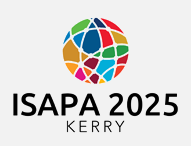Start Date
17-6-2025 12:30 PM
End Date
17-6-2025 2:00 PM
Abstract
Introduction
Physical activity levels are low among Visually Impaired (VI) adults (Ackley et al., 2009; Haegele & Zhu,2022). Identifying the factors that influence PA engagement is essential to improving overall health and quality of life outcomes for this population. While several works examine barriers to PA participation for VI individuals, fewer works explore leisure interests and satisfaction, both factors which influence recurring participation and overall quality of life (Dattilo, 2015; Kim et al.2020). This cross-sectional study seeks to explore the relationships between leisure activity interests, participation, and satisfaction among VI adults in the U.S.
Methodology
VI adults were recruited to complete an online questionnaire which consisted of 51 items across three sections: the Leisure Interest Measure (Ragheb & Beard 1992), Leisure Frequency and Enjoyment, and demographic information.
Results Analysis is ongoing. Respondents (n=232) were largely white and male, with an average age of 36.5. 35.8% categorized their visual impairment as a B2 on the U.S.A.B.A classification system(n=232). Mean leisure interest scores were highest for the social domain(M=3.72) and lowest for the physical and mechanical domains(M=3.41, M=3.25) 58.1% of participants (n=133) reported engaging in physical leisure activities less than once a week. Data will be further analyzed using inferential statistics to explore relationships between factors.
Conclusions Preliminary results suggest low interest and participation in recreational PA. Full analysis may provide insight into potential areas of need which can be utilized by recreation professionals to improve the quality of services for VI individuals.
References
Ackley, E., Caputo, J., Perry, T., Fuller, D., & Morgan, D. (2009). Physical Activity,Body Composition, and Perceived Quality of Life of Adults with Visual Impairments. Journal of visual impairment & blindness, 103, 17-29. https://doi.org/10.1177/0145482X0910300104
Dattilo, J. (2015). Positive psychology and leisure education: a balanced and systematic service delivery model. Therapeutic recreation journal, 49(2), 148.
Haegele, J.A., & Zhu, X. (2022). Movement behaviors, comorbidities, and health-related quality of life among adults with visual impairments. Disability & Rehabilitation, 44(16), 4361-4367.
Kim, J., Han, A., Hodges, J. S., & Kim, M. (2020). Contribution of Leisure Activities to Health Perception, Life Satisfaction, and Self-Esteem among Korean Individuals with Visual Impairments. Journal of Visual Impairment & Blindness, 114(2), 152-164. https://doi.org/10.1177/0145482X20906642
Ragheb, M. G., & Beard, J. G. (1992). Measuring leisure interests. Journal of Park and Recreation Administration, 10, 1-13.
U.S. Association of Blind Athletes. (2021). Visual classifications.https://www.usaba.org/me mbership/visual-classifications/
Recommended Citation
Creveling, Kathryn E.; Haegele, Justin; and Zhu, Xihe, "Exploring Leisure Activity Interest, Participation, and Satisfaction in Visually Impaired Adults" (2025). International Symposium of Adapted Physical Activity and International Symposium on Physical Activity and Visual Impairment and Deafblindness. 40.
https://sword.mtu.ie/isapa/2025/day2/40
Exploring Leisure Activity Interest, Participation, and Satisfaction in Visually Impaired Adults
Introduction
Physical activity levels are low among Visually Impaired (VI) adults (Ackley et al., 2009; Haegele & Zhu,2022). Identifying the factors that influence PA engagement is essential to improving overall health and quality of life outcomes for this population. While several works examine barriers to PA participation for VI individuals, fewer works explore leisure interests and satisfaction, both factors which influence recurring participation and overall quality of life (Dattilo, 2015; Kim et al.2020). This cross-sectional study seeks to explore the relationships between leisure activity interests, participation, and satisfaction among VI adults in the U.S.
Methodology
VI adults were recruited to complete an online questionnaire which consisted of 51 items across three sections: the Leisure Interest Measure (Ragheb & Beard 1992), Leisure Frequency and Enjoyment, and demographic information.
Results Analysis is ongoing. Respondents (n=232) were largely white and male, with an average age of 36.5. 35.8% categorized their visual impairment as a B2 on the U.S.A.B.A classification system(n=232). Mean leisure interest scores were highest for the social domain(M=3.72) and lowest for the physical and mechanical domains(M=3.41, M=3.25) 58.1% of participants (n=133) reported engaging in physical leisure activities less than once a week. Data will be further analyzed using inferential statistics to explore relationships between factors.
Conclusions Preliminary results suggest low interest and participation in recreational PA. Full analysis may provide insight into potential areas of need which can be utilized by recreation professionals to improve the quality of services for VI individuals.
References
Ackley, E., Caputo, J., Perry, T., Fuller, D., & Morgan, D. (2009). Physical Activity,Body Composition, and Perceived Quality of Life of Adults with Visual Impairments. Journal of visual impairment & blindness, 103, 17-29. https://doi.org/10.1177/0145482X0910300104
Dattilo, J. (2015). Positive psychology and leisure education: a balanced and systematic service delivery model. Therapeutic recreation journal, 49(2), 148.
Haegele, J.A., & Zhu, X. (2022). Movement behaviors, comorbidities, and health-related quality of life among adults with visual impairments. Disability & Rehabilitation, 44(16), 4361-4367.
Kim, J., Han, A., Hodges, J. S., & Kim, M. (2020). Contribution of Leisure Activities to Health Perception, Life Satisfaction, and Self-Esteem among Korean Individuals with Visual Impairments. Journal of Visual Impairment & Blindness, 114(2), 152-164. https://doi.org/10.1177/0145482X20906642
Ragheb, M. G., & Beard, J. G. (1992). Measuring leisure interests. Journal of Park and Recreation Administration, 10, 1-13.
U.S. Association of Blind Athletes. (2021). Visual classifications.https://www.usaba.org/me mbership/visual-classifications/

